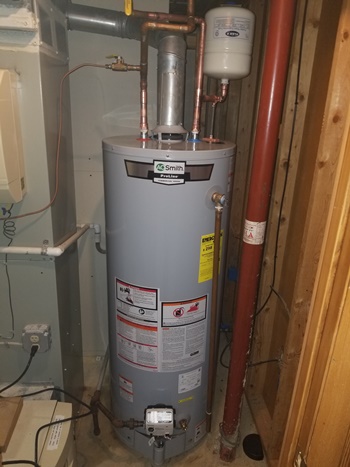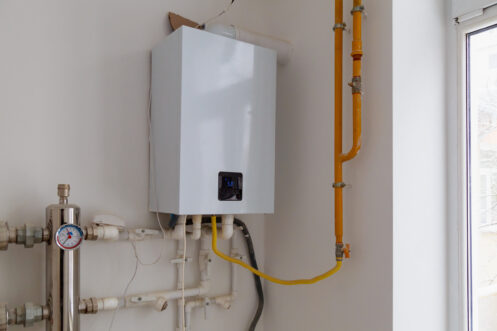The article following next on the subject of How to Maintain a Hot Water Heater in a Few Simple Steps is amazingly compelling. Don't overlook it.

Warm water is vital for daily convenience, whether it's for a rejuvenating shower or washing recipes. To ensure your warm water system runs effectively and lasts longer, normal maintenance is key. This write-up offers sensible ideas and insights on just how to preserve your home's warm water system to prevent disruptions and expensive repair work.
Introduction
Preserving your home's hot water system may seem challenging, but with a couple of basic steps, you can ensure it operates efficiently for years ahead. This guide covers every little thing from comprehending your hot water system to DIY upkeep ideas and knowing when to employ expert aid.
Significance of Keeping Your Hot Water System
Normal upkeep not only expands the life expectancy of your warm water system however additionally ensures it runs efficiently. Disregarding maintenance can cause decreased efficiency, greater energy costs, and even early failing of the system.
Signs Your Warm Water System Demands Upkeep
Understanding when your warm water system needs interest can protect against major problems. Keep an eye out for indications such as irregular water temperature, unusual noises from the heating system, or rusty water.
Comprehending Your Hot Water System
Prior to diving right into maintenance tasks, it's practical to understand the fundamental elements of your hot water system. Commonly, this consists of the water heater itself, pipes, anode rods, and temperature controls.
Regular Monthly Upkeep Tasks
Routine month-to-month checks can aid capture small issues before they escalate.
Flushing the Water Heater
Flushing your water heater removes debris buildup, improving efficiency and prolonging its life.
Checking and Replacing Anode Rods
Anode rods prevent corrosion inside the tank. Examining and replacing them when worn out is crucial.
Examining and Changing Temperature Settings
Adjusting the temperature level setups makes certain optimum efficiency and safety and security.
Do It Yourself Tips for Upkeep
You can execute a number of maintenance tasks yourself to maintain your warm water system in leading problem.
Looking for Leaks
On a regular basis check pipelines and links for leakages, as these can result in water damage and higher bills.
Evaluating Stress Alleviation Valves
Examining the stress safety valve guarantees it operates properly and stops excessive pressure accumulation.
Protecting Pipes
Insulating warm water pipelines minimizes warmth loss and can save power.
When to Call a Specialist
While DIY upkeep is advantageous, some issues require professional competence.
Complicated Issues Needing Expert Help
Examples consist of significant leakages, electrical issues, or if your water heater is regularly underperforming.
Regular Specialist Maintenance Benefits
Specialist upkeep can include complete inspections, tune-ups, and ensuring conformity with security criteria.
Final thought
Regular maintenance of your home's warm water system is vital for performance, durability, and expense financial savings. By complying with these pointers and understanding when to look for expert help, you can make sure a reputable supply of hot water without unanticipated disruptions.
How to Maintain an Instant Hot Water Heater
Before tinkering with your hot water heater, make sure that it’s not powered on. You also have to turn off the main circuit breaker and shut off the main gas line to prevent accidents. Also turn off the water valves connected to your unit to prevent water from flowing into and out of the appliance. 2. When you’re done, you have to detach the purge valves’ caps. These look like the letter “T†and are situated on either side of the water valves. Doing so will release any pressure that has accumulated inside the valves while at the same time avoid hot water from shooting out and burning your skin. 3. When the purge valves’ caps are removed, you have to connect your hosing lines to the valves. Your unit should have come with three hoses but if it didn’t, you can purchase these things from any hardware or home repair shops. You can also get them from retail stores that sell water heating systems. Read the user’s manual and follow it to complete this task properly. When the hosing lines are connected, open the purge port’s valves. 4. You should never use harsh chemical cleaners or solutions when cleaning your unit. Make use of white vinegar instead. It should be undiluted and you’ll probably use about 2 gallons. 5. Now flush your water heater. This task should probably take about 40 minutes. We can’t give you specific directions for this because the procedure is carried out depending on the type, model and brand of your heater. With that being said, refer to the user’s manual. 6. When you’re done draining the unit, you have to turn off the purge port valves again. Remove the hosing lines that you earlier installed on each of the water valves. Put the valve caps (purge port) back in their respective places and be very careful so as not to damage the rubber discs that are found inside these caps. 7. Now that everything’s back in place, check your user’s manual again to find out how to reactivate your water heating system. 8. Once it is working, turn one of your hot water faucets on just to let air pass through the heater’s water supply pipes. Leave the tap on until water flows smoothly out of it. https://www.orrplumbing.com/blog/2014/september/how-to-maintain-an-instant-hot-water-heater/

I was shown that write-up about Tips on Maintaining a Water Heater from a pal on our other site. Enjoyed our review? Please quickly share it. Help somebody else check it out. We recognize the value of your readership.
Book Today!